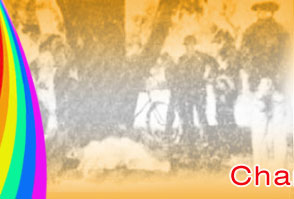The revolutionary zeal of Chandrasekhar Azad was a
manifestation of his principles and philosophies. At an early age,
Chandrasekhar became disenchanted with Gandhian philosophy because of
the abrupt end to the non cooperation movement in 1922 and the
subsequent split of the Congress Party into two factions. A depressing
stagnancy prevailed in the political scenario that made Azad all the
more determined to seek freedom through armed rebellion.
Azad believed that armed revolution against the enemies of people was
indispensable to kindle patriotism among the masses. He joined hands
with other revolutionaries like Ramprasad Bismil, Jogesh Chatterjee, and
Sachindranath Sanyal to establish the Hindustan Republican Association
(HRA) in October 1924 in Kanpur. The organization was founded with the
objective of unleashing a mass movement by inflicting blows to the
British machinery.
Like his comrades Azad was also drawn towards the philosophy of
socialism and he drew inspiration from the success of the Russian
Revolution in 1917. After the arrest of most of the HRA leaders in the
Kakori robbery, Azad came together with Bhagat Singh to reorganize the
HRA as the Hindustan Socialist Republican Association. Attainment of a
free and socialist India became the avowed objective of the
organization.
Chandrasekhar Azad was a pious Hindu and he worshipped Lord Hanuman.
Many a time Azad masqueraded as a priest in a Hanuman temple to escape
police manhunts. He established a small hut near the temple of Lord
hanuman on the banks of Saatar River and started living there in the
disguise of Pandit Harishankar Brahmachari.









